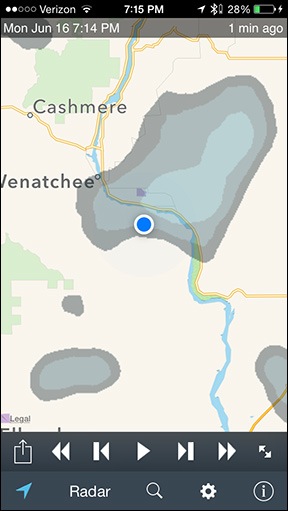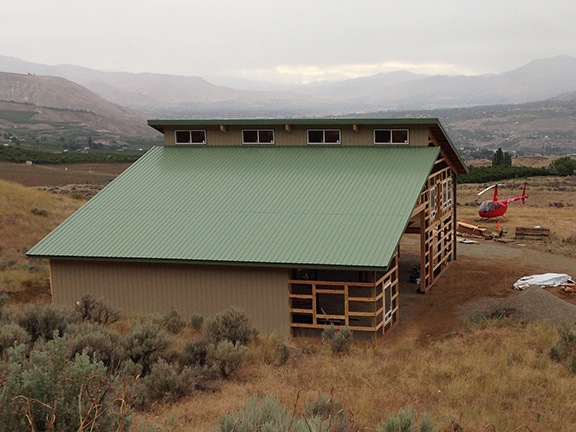The workers continue to put the metal “skin” on my building.
Wednesday was a much mellower day for me. The weather was nice and there was nothing at all on my calendar. I took it easy in the morning, catching up on blog posts and trying to get control of my email.
Realizing that I’d been too exhausted the night before to check out what had been done the previous day, I took a break to go outside and look at the building. I took photos of the plumber’s work, mostly to document it for future reference.

My contract with the builders included stub outs for the plumbing. This means doing all of the plumbing that would be under the slab. This image shows the sewer pipe where it comes into a future downstairs bathroom and splits off for venting and connection to upstairs plumbing. The concrete will go to the top of the circular thing on the left, which is actually the fitting for a toilet.
Angel’s crew arrived promptly at 7 AM and continued working on the building, putting the metal skin on the back side. While the RV garage/shop side of the building got rolled insulation in the walls, the living space/garage side got only a plastic moisture barrier. I expected this; the living space would get thick insulation after it was framed and the garage would be insulated sometime in the future.
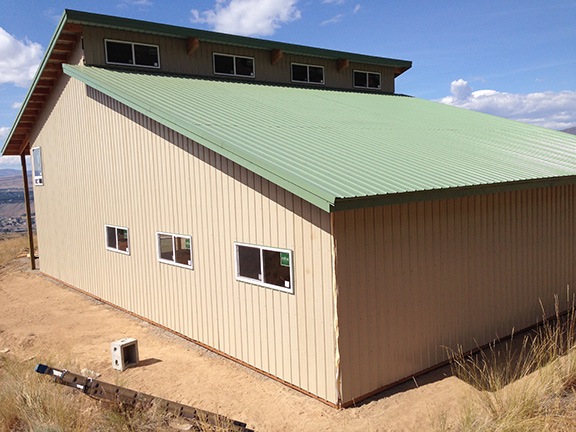
They finished the back wall relatively quickly — it had been half done the day before.
A pilot friend of mine from Arizona came for a visit late in the morning. (You can see his red truck in the time-lapse video below.) The last time he’d been to the site was the year before, when nothing had been done. He was blown away by the progress and the sheer size of the building. As we sat in the shade in the front of my RV, looking out over the view with a cool early summer breeze blowing, he made it clear that he was as sick of Arizona summers as I had been. We talked about him buying my RV when I’m ready to sell and camping out on the east end of my property in the summer during cherry season. Heck, why not?
After finishing the back wall, Angel and the guys got started on the front. That’s where they hit a bit of a snag. Apparently, Tanya had goofed in her metal order and they were two long sheets short. Rather than leave a gap, they patched together some of the odd-colored protective metal sheets as a temporary cover and kept going, finishing the metal on the RV garage/shop side of the building before quitting time. An order for the correct metal sheets is in; they’ll replace the temporary metal when it arrives.
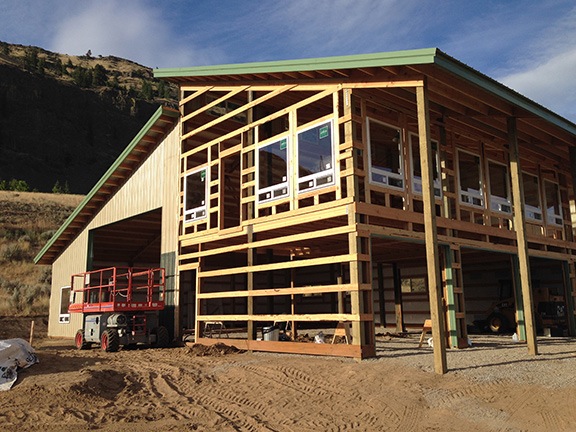
Here’s how far they got on Day 19; I shot this the next morning when the light was on the front of the building.
After they left, I wandered around the inside of my building — which now felt like I was inside a building. Despite the hot sun outside, it was cool and shady. It was still bright though; I suspect I won’t need much daytime lighting, especially during the summer months.
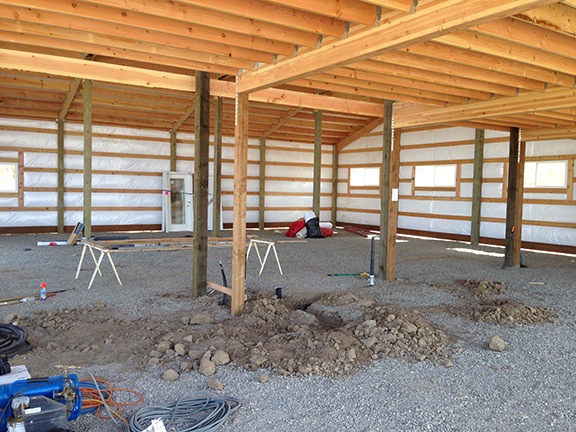
This view from inside my first garage bay is looking through the RV garage and into the shop. Eventually, a staircase will block much of this view.
Here’s the time-lapse movie for the day:



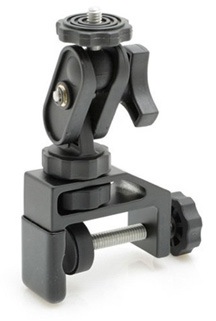

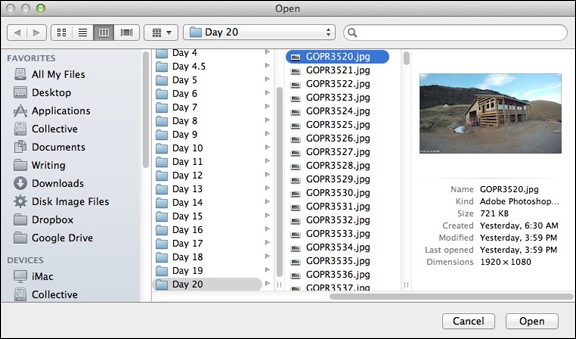

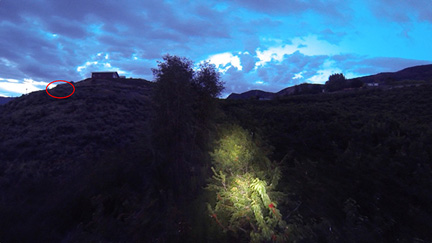
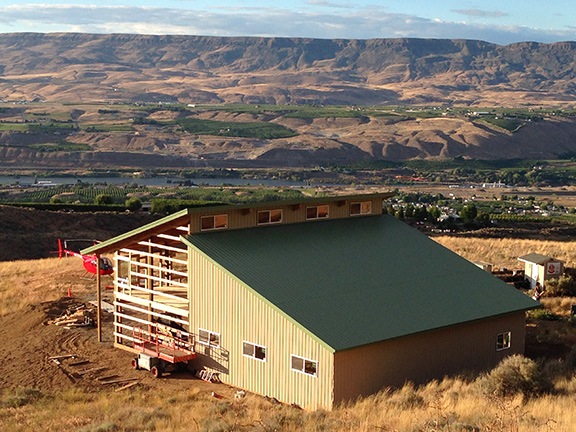
 Chuck and me through the miracle of Skype.
Chuck and me through the miracle of Skype. You can also go to the
You can also go to the 